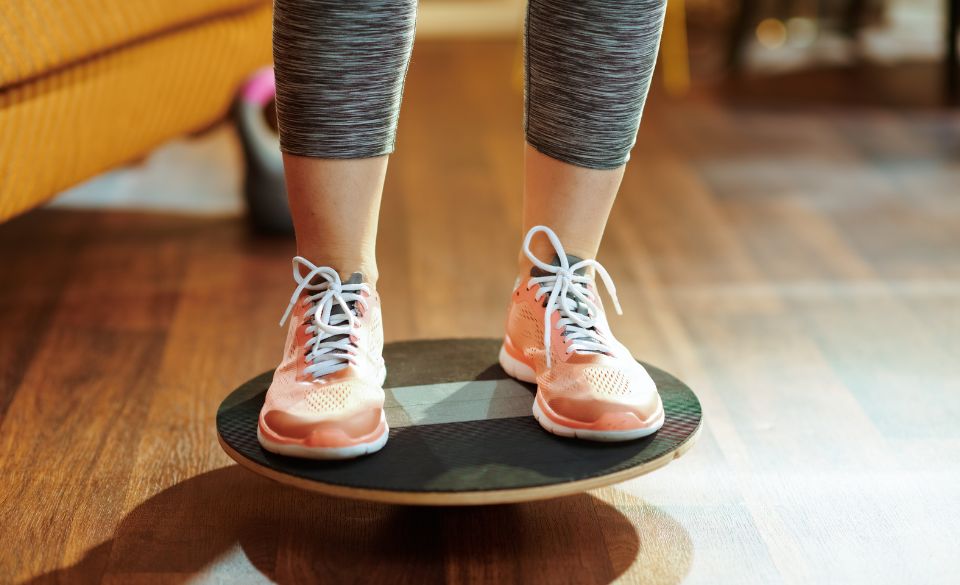
Ankle Mobility Exercises: A Complete Guide
Page Contents
Today, we’re diving into a topic that might not always steal the spotlight but is absolutely crucial for overall movement and performance – ankle mobility exercises. We often focus on big muscle groups like the chest or legs, but those ankle joints deserve some attention too. So, if you’re ready to give your ankles the love they deserve, let’s jump right in!
Why is Ankle Mobility Important?
Ankle mobility might not be the hottest topic in the fitness world, but it’s a game-changer when it comes to how your body moves and functions. Imagine this: your ankles are like the foundation of a building. If that foundation is unstable or restricted, it affects everything above it. The same goes for your body – if your ankles lack mobility, it can create a domino effect of issues throughout your musculoskeletal system.
Let’s break it down. Your ankles play a critical role in maintaining balance and stability. Whether you’re hiking on uneven terrain or simply standing on one leg while putting on your pants, your ankles are the unsung heroes that keep you upright. But it doesn’t stop there. When you’re active, like when you’re hitting the gym or going for a run, your ankles are instrumental in generating power and transferring force. They’re your body’s shock absorbers, cushioning the impact of each step or jump.
Think about a squat, for instance. Ankle mobility allows you to keep your heels on the ground and your knees tracking properly over your toes. Without it, compensations occur – your knees might cave in, your lower back might round, and you might not be able to reach the full depth of the squat. Over time, these compensations can lead to inefficient movement patterns and even injuries.
Now, let’s consider your walking gait. When you take a step, your ankle needs to flex and extend to accommodate the terrain. If your ankle mobility is limited, your body might find ways to compensate – like altering your stride or posture – to keep you moving. Unfortunately, these compensations can strain other joints and muscles, potentially leading to issues like knee pain or hip discomfort.
In a nutshell, ankle mobility isn’t just a fancy term thrown around by fitness pros. It’s the key to unlocking your body’s potential for fluid, pain-free movement. Whether you’re an athlete aiming to improve performance or someone who just wants to navigate daily activities with ease, giving your ankles the mobility they need is a small investment with a big payoff. Your body will move more efficiently, your risk of injury will decrease, and you’ll find a newfound sense of balance and confidence in your movements.
What Causes Poor Ankle Mobility?
Poor ankle mobility can be a sneaky culprit behind a range of movement limitations and discomforts. But what’s behind the scenes causing this issue? Let’s unravel the factors that can contribute to limited ankle mobility.
Sedentary Lifestyle: The modern lifestyle often involves prolonged periods of sitting – at a desk, in front of a computer, or even on the couch binge-watching shows. This lack of movement can lead to tightness and stiffness in the muscles around the ankle joint, gradually reducing its range of motion.
Previous Injuries: If you’ve ever sprained your ankle or experienced any other form of ankle injury, the healing process might lead to scar tissue formation. While scar tissue helps repair damaged tissue, it can also restrict the joint’s movement if not properly addressed.
Lack of Stretching: If you’re skipping your pre- and post-workout stretches, you might be missing out on a crucial opportunity to maintain or improve ankle mobility. Regular stretching helps keep muscles and connective tissues flexible and supportive of joint movement.
Muscle Imbalances: The muscles surrounding the ankle joint work in harmony to facilitate movement. However, muscle imbalances, where certain muscles are stronger or tighter than others, can disrupt this harmony. For instance, tight calf muscles can limit ankle dorsiflexion, the motion that allows you to lift your toes toward your shin.
Footwear Choices: Believe it or not, the shoes you wear can impact your ankle mobility. High heels, for instance, place your ankles in a pointed position for extended periods, leading to tightness in the calf muscles and reduced ankle flexibility.
Aging: As we age, the wear and tear on our joints become more apparent. Ankle mobility can naturally decrease with age due to changes in joint lubrication, connective tissue elasticity, and muscle strength.
Neglecting Ankle Health: Let’s face it – ankles often don’t get the same attention as other body parts. We might be diligent about working on our core or upper body, but ankles tend to fly under the radar until a problem arises.
Genetic Factors: Sometimes, genetics play a role in determining your natural range of motion. If your parents or close relatives have had limited ankle mobility, you might be predisposed to experiencing the same issue.
It’s important to note that poor ankle mobility isn’t a life sentence. The great news is that with awareness, dedication, and the right exercises, you can significantly improve your ankle mobility and alleviate associated issues. So, whether it’s addressing the effects of a desk-bound job or tackling the aftermath of an old ankle injury, taking proactive steps to enhance ankle mobility is a win for your overall movement and well-being.
Top 10 Ankle Mobility Exercises
Calf Stretches: Start with a classic calf stretch. Stand facing a wall, with one foot forward and the other back, and lean into the wall while keeping your back leg straight. You’ll feel a gentle stretch in your calf muscles.
Ankle Circles: Sit on a chair and lift one leg off the ground. Rotate your ankle in circular motions, both clockwise and counterclockwise. This helps lubricate the ankle joint and improve its range of motion.
Heel-to-Toe Rocks: Stand with your feet hip-width apart. Slowly shift your weight forward onto your toes, then rock back onto your heels. This dynamic movement promotes flexibility and balance in the ankles.
Resistance Band Flexion: Sit on the floor with your legs extended. Loop a resistance band around the ball of your foot and gently flex your foot backward against the band’s resistance. This exercise targets the muscles that support ankle movement.
Toe-Tapping: While sitting, place a small object on the ground and tap it with your toes. This seemingly simple exercise actually engages various ankle muscles and enhances flexibility.
Alphabet Writing: Lift one foot off the ground and “write” the alphabet in the air with your big toe. This fun exercise encourages a full range of motion in your ankle joint.
Eccentric Heel Drops: Stand on the edge of a step or platform on your tiptoes. Slowly lower your heels below the step’s level, then raise your heels back up. This controlled movement strengthens the muscles around the ankle.
Single-Leg Balances: Stand on one foot and hold the position for as long as you can. This not only challenges your ankle stability but also enhances proprioception, which is your body’s sense of its position in space.
Ankle Dorsiflexion Stretch: Kneel down and place one foot flat on the ground, toes pointing up. Gently lean forward, keeping your heel on the ground. You’ll feel a stretch in the front of your ankle.
Towel Scrunches: Place a towel on the floor and use your toes to scrunch it towards you. This exercise engages the muscles in the bottom of your feet, promoting overall foot and ankle strength.
Final Thoughts: Ankle Mobility Exercises
There you have it – a comprehensive guide to ankle mobility exercises that will surely put a spring in your step! Remember, neglecting your ankle mobility can lead to a ripple effect of imbalances and discomfort throughout your body. So, whether you’re an avid athlete or just someone looking to move with ease in daily life, incorporating these exercises into your routine can make a world of difference. Take those ankles on a journey of flexibility, strength, and improved performance – they’ll thank you in every step you take!



